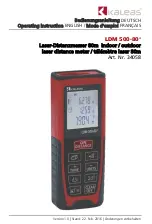
5-3
IM 77C01H01-10EN
MODBUS Communication
5
5.1 Overview
5.1.1
Configuration of Message
Messages sent from the higher-level device to the UPM100 consist of the following
elements.
Element
Start of
Message Mark
Station Number
(ST-NO)
Function
Code
Data
Error
Check
End of
Message Mark
Number of bytes
in RTU mode
None
1
1
2n
(variable)
2
None
Number of bytes
in ASCII mode
1
2
2
4n
(variable)
2
2
(1)
(2)
(3)
(4)
(5)
(6)
(1) Start of Message Mark
This mark indicates the start of a message. Note that only ASCII mode requires a colon (:).
(2) Station Number (01 to 99)
Station numbers are used by the higher-level device to identify the UPM100 at the
communication destination. (These numbers are identification numbers specific to individual
UPM100, which are expressed in hexadecimal in the message.)
(3) Function Code (See section 5.2, “Message and Response”)
This element specifies a command (function code) from the higher-level device.
(4) Data
This element specifies D register numbers, the number of D registers, parameter values,
or others in accordance with the function code. (It is expressed in hexadecimal in the
message.)
(5) Error Check
In RTU mode: Carried out by the cyclic redundancy check (CRC-16) system.
In ASCII mode: Carried out by the longitudinal redundancy check (LRC) system.
(6) End of Message Mark
This mark indicates the end of a message. Note that only ASCII mode requires CR + LF.
Summary of Contents for UPM100
Page 2: ......
Page 14: ...Blank ...
Page 58: ...Blank ...
Page 74: ...Blank ...
Page 82: ...Blank ...
Page 86: ...Blank ...
Page 100: ...Blank ...
Page 102: ...Blank ...
Page 103: ......
Page 104: ......
















































